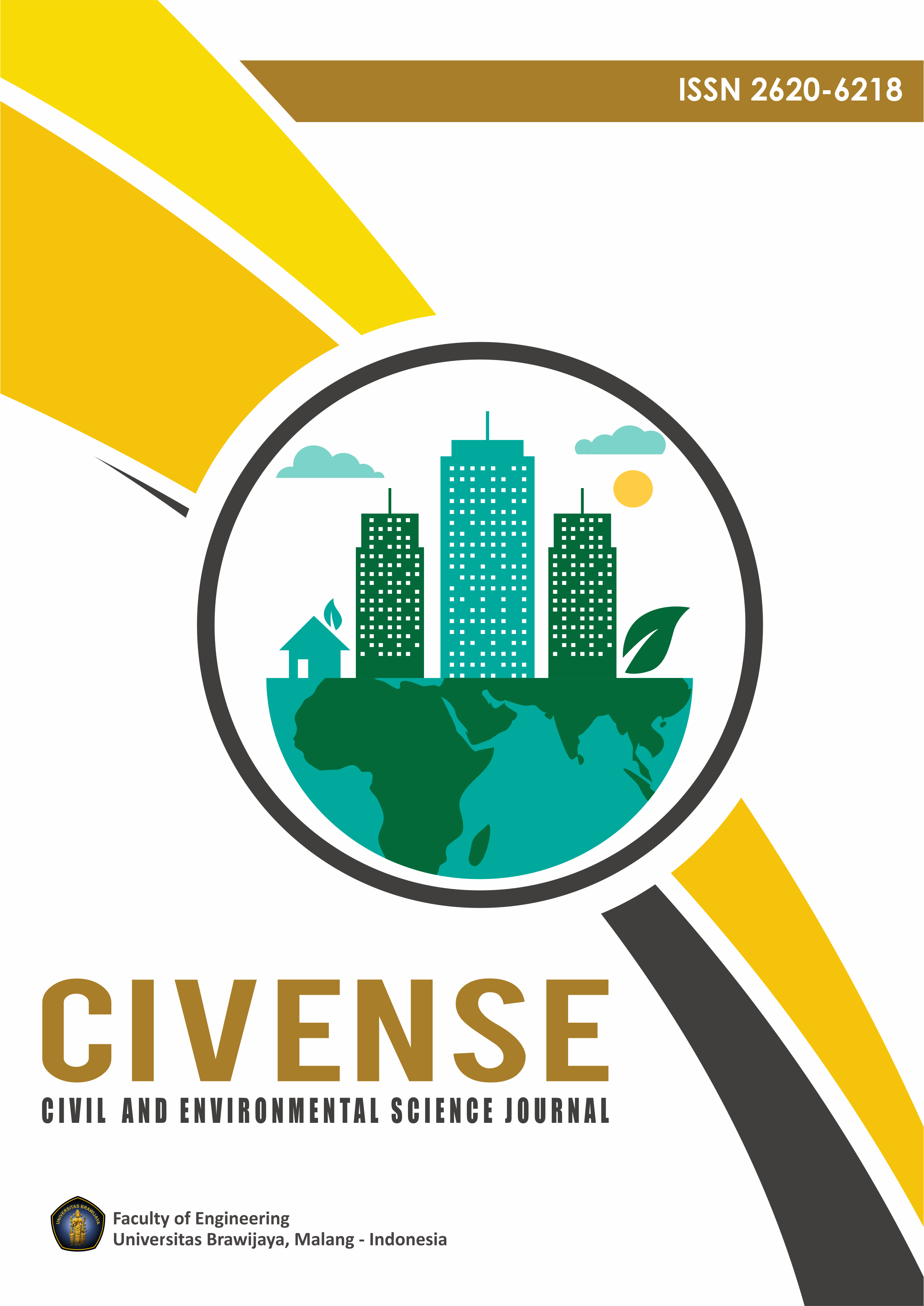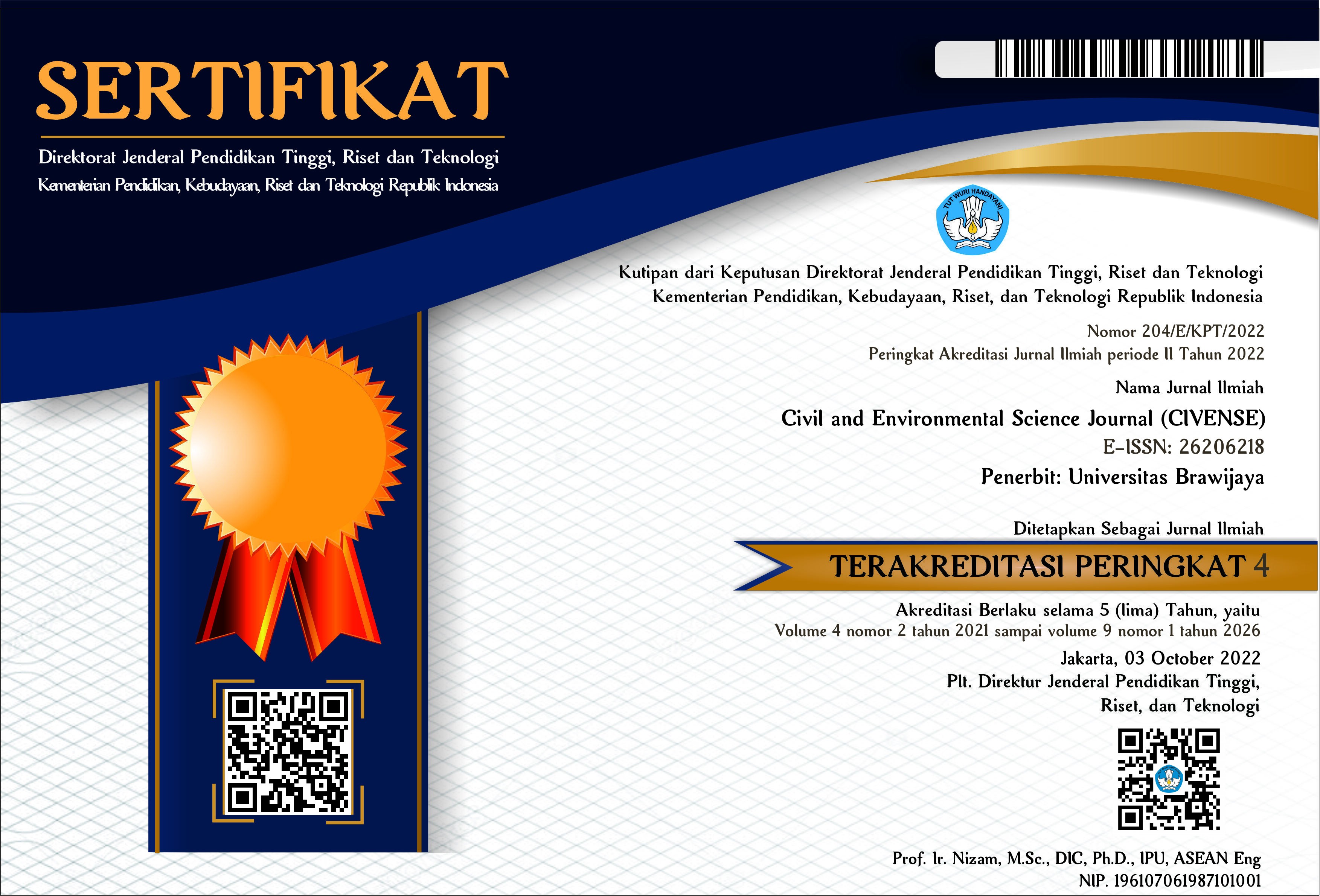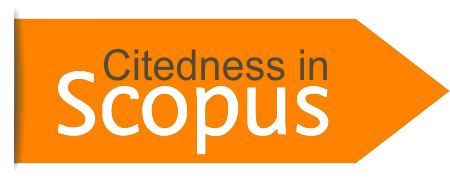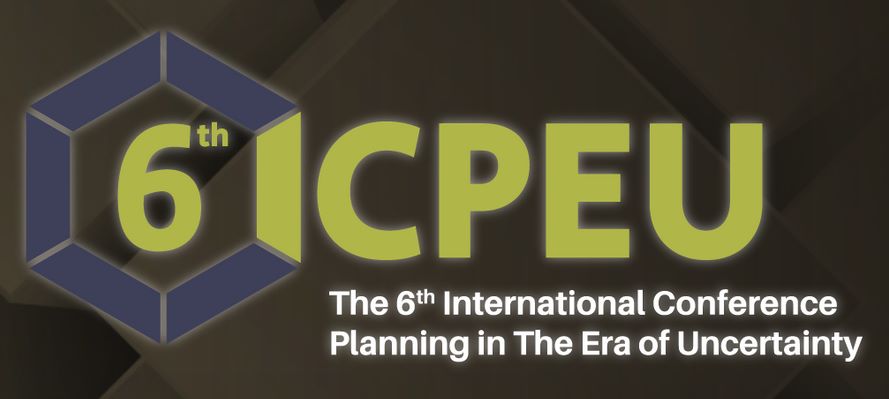Application of Sediment Runoff Model to the Wlingi Reservoir Watershed, Indonesia
DOI:
https://doi.org/10.21776/ub.civense.2020.00301.2Keywords:
Fujiyama Model, Sedimentation, Wlingi ReservoirAbstract
Sedimentation is the main problem in Wlingi reservoirs. They are suffering from severe watershed erosion and a heavy load of volcanic ash ejected from the eruption of Mount Kelud. Wlingi reservoir is significantly affected by recurrent volcanic activities of Mount Kelud. After the 2014 eruption, the capacity of Wlingi reservoirs decreased by 82.5% or only 3.70 million m3 from the initial capacity of 24 million m3. To analyze the impact of volcanic eruption disaster on reservoir sedimentation an integrated numerical model of sediment is required. The Fujiyama model is an integrated sediment runoff model using a basin model composed of unit channels and unit slopes. The model seems suitable for a mountainous basin. The simulation results from the model explain that the mechanism of transporting sediment into the Wlingi Reservoir can be explained based on the type of sediment transport. The movement of sediment originating from Kelud Mountain in Kali Lekso is strongly influenced by rainfall duration compared to the intensity of the rainfall. Also, the simulation model results explained that the mechanism of sediment transportation is dominated by suspended load or bed load which when large discharges will move with the mechanism of suspended load sediment transport.
References
PJT I. 2016. Kajian Kapasitas Tampungan Waduk Sengguruh-Sutami-Lahor dan Wlingi-Lodoyo. Malang : Penelitian oleh Biro Penelitian dan Pengembangan.
Hidayat, F., Juwono, P. T., Suharyanto, A., Pujiraharjo, A., Legono, D., Sisinggih, D., Neill, D., Fujita, M. & Sumi, T. 2017. Assesment of Sedimentation in Wlingi and Lodoyo Reservoirs: A Secondary Disaster Following the 2014 Eruption of Mt. Kelud, Indonesia. Journal of Disaster Research, Vol. 12 No. 3.
Soekistijono, Hidayat, F. & Harnanto, A. 2005. Coordinated Sediment Flushing in Wlingi-Lodoyo Reservoirs and the Study of Its Benefits and Effect to Water Quality and Ecosystem in Downstream Reaches. International Seminar on Echohydrology. Denpasar.
Kazuki Yamanoi and Masaharu Fujita, Development of a Combined Model of Sediment Production, Supply and Transport, and Its Application to a Mountainous Basin, Journal of JSCE, Vol. 3, 224-229, 2015. https://doi.org/10.2208/journalofjsce.3.1_224
Egashira, S. & Matsuki, T. 2000. A Method of Predicting Sediment Runoff Caused by Erosion of Stream Channel Bed. Annual Journal of Hydraulics Engineering. Japan Society of Civil Engineers 44.
Masaharu Fujita, Kazuki Yamanoi and Hiroaki Izumiyama, A Combined Model of Sediment Production, Supply and Transport, Sediment Dinamycs: from the Summit to the Sea, Procedings of symposium, New Orleans, Lousiana, USA, 11-14 December 2014) (IAHS Publ. 367, 2014). doi:10.5194/piahs-367-357-2015
Downloads
Published
How to Cite
Issue
Section
License
Copyright (c) 2020 Civil and Environmental Science Journal

This work is licensed under a Creative Commons Attribution-NonCommercial 4.0 International License.
Authors who publish with this journal agree to the following terms:
Authors retain copyright and grant the journal right of first publication with the work simultaneously licensed under a Attribution-NonCommercial 4.0 International License that allows others to share the work with an acknowledgement of the work's authorship and initial publication in this journal.
Authors are able to enter into separate, additional contractual arrangements for the non-exclusive distribution of the journal's published version of the work (e.g., post it to an institutional repository or publish it in a book), with an acknowledgement of its initial publication in this journal.
Authors are permitted and encouraged to post their work online (e.g., in institutional repositories or on their website) prior to and during the submission process, as it can lead to productive exchanges, as well as earlier and greater citation of published work (See the Effect of Open Access).














